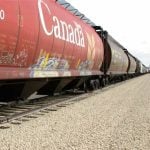The first public stock exchange opened in Amsterdam in 1611, trading one company, the Dutch East India Company. Twenty-five years later, coincident with tulip mania, the company had a market cap of 78 million Dutch guilders, which translates to $9.7 trillion current U.S. dollars, putting Microsoft’s and Apple’s near-$3 trillion valuations into perspective.
The London Stock Exchange opened in 1773, followed closely by the New York Stock Exchange in 1792. The Toronto Stock Exchange opened its doors in 1861, shortly before the founding of Canada. Very few institutions have experienced the longevity of these exchanges, through all the manias, panics, wars, depressions, recessions, currency crises, political upheavals and so on.
Read Also

Gentle treatments for pain in the neck
Heading toward year-end, people unknowingly tense up against the cold and busyness, causing neck pain that can often be treated with appropriate support and gentle mobility, athletic therapist Kathlyn Hossack says.
In the short decade I have been writing about stock markets, we have experienced the first Russian invasion of Ukraine in 2014; the oil price crash in 2014-15; Greece’s default in 2015; Brexit in 2016; Trump’s China trade war in 2018; COVID-19 in 2020; a speculative mania in 2021 leading to the 2022 bear market; Russia’s second and more devastating invasion of Ukraine in 2022; the highest inflation in a half century in 2021-23; and Hamas atrocities in 2023. Each crisis caused a temporary market panic — “temporary” being the operative word — from which the market eventually recovered and went on to make new highs. At the time of writing the S&P 500 was in new record territory, while the TSX is still lagging but close to new highs.
Timeless lessons
In no way do I mean to belittle the horrific human tragedies of both Russian invasions of Ukraine or the Hamas atrocities. While as humans we care deeply about such tragedies, markets display relative indifference.
There are a number of timeless lessons reinforced by the most recent bear market and recovery:
- A panic can travel halfway around the world before optimism can get its shoes on. For this reason, it is said the markets take the elevator down and the stairs up, although there have been a couple recent examples where they took the elevator up too.
- Cynicism and fear have an appeal that positivity can never have. It is headlines of doom that get the most readership. Numerous newsletters and market prognosticators perpetually sell doom — and their secrets of how to avoid the coming crash. It is by no accident the No. 1 financial newsletter on newsletter amalgamator Substack is titled “Doomberg.” I personally find the peddling of doom highly distasteful, whether related to climate, GMOs, financial markets or any other doom-oriented circumstance such as the turn-of-the-millennium Y2K (remember that one?).
- Markets will embarrass the largest possible number of participants, economists and market forecasters at any given time. It’s not called “The Great Humiliator” for nothing.
COVID, and more importantly governments’ reaction to it, was truly a unique situation. However, to the markets it was just another in a long list of panics that occurred over time. The proliferation of special-purpose acquisition companies (SPACs), which I wrote about two years ago, was unique, but to the markets they were just another in a long list of speculative manias.
This leads to a list of investor truisms:
- You have to tolerate volatility, pain and uncertainty to earn superior returns the market offers. To quote Talking Heads’ 1980 song Once In A Lifetime: “Same as it ever was.”
- When sentiment is worst, and others are gripped with fear like at the beginning of 2023, opportunities are best. “Same as it ever was.”
- Highly profitable companies at reasonable valuations will make the best long-term investments. “Same as it ever was.”
- Our task as stock investors is to identify and buy those best opportunities. “Same as it ever was.”
















